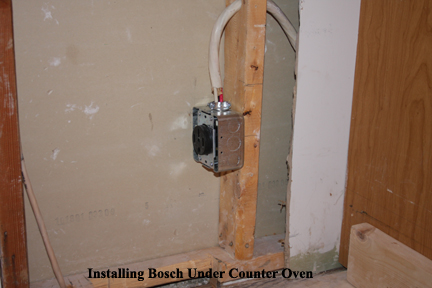Written by Cecilia Harsch; Updated December 09, 2018
How to Install a Wall Oven Using Flexible Install (FIT) System The Flexible Install (FIT) system can be complex, and varies based on single and double ovens. Check the product's Installation Instructions for further details. Wall ovens come in four standard widths: 24', 27', 30' and 36' and slip inside a cabinet. Unless you intend to replace the cabinetry as well, you'll want to choose a new oven that's approximately the same width as the one you're replacing.
- Video showing how to remove a dirty, dated old wall oven.
- Feb 28, 2017 Video showing how to remove a dirty, dated old wall oven.
- An over-the-range microwave oven makes efficient use of space in your kitchen, while also incorporating lighting and ventilation. See if your microwave has an installation template or wall plate. 'I learned how to install an over-the-range microwave oven for the first time.' Related Articles.
Related Articles
- 1 Install a Single Wall Oven
- 2 Replace an Oven Heating Coil
- 3 Replace a Glow Plug on Gas Ranges
- 4 Replace Broken Inner Oven Door Glass
Most major appliances plug into a wall outlet either directly behind the appliance, or in the case of the dishwasher, directly beneath the sink. If the appliance is hardwired, you can move the appliance away from the wall far enough to access the connection without much effort. A built-in wall oven is a bit more challenging. It takes more than one person to remove a wall oven, and you simply can't slide it from the wall cabinet. Be prepared to increase your flexibility when accessing the rear of the wall oven.

Cost To Install Wall Oven

Turn off the breaker to your wall oven. Place a piece of tape across the breaker in the 'OFF' position to ensure a family member does not turn on the breaker. Alternatively, leave a note on the breaker box letting your family know you are working with the electricity.
Ensure the electricity is disconnected by turning on the wall oven. Hold a noncontact voltage tester inside the oven near where the heating element connects to the back wall of the oven. The power is off if the tester does not flash or emit an alarm.
Remove the wall oven doors. Depending on your make and model, the doors may slide up and off the hinges, have hinge locks or the door attaches to the hinges with screws. If your oven door attaches to the hinges with screws, remove the screws before lifting the door up and off the hinges. The hinge locks are above the hinges and against the oven wall. Slip a flathead screwdriver between the lock and the wall. Pry the lock away from the oven and rotate it toward the oven door. Lift the oven door off of the oven.
Look for any separate trim pieces attached around the oven. Often these trim pieces are along the bottom of the wall oven. Remove the screws from the trim pieces and set the trim pieces aside.
Remove the remaining screws around the exterior edge of the wall oven to release it from the wall. Ask an assistant to help you slide the oven from the wall far enough to access the electrical wires.
Hold the tester against the electrical wires to double-check for a live current. Cut the wires if you are replacing this oven, using wire cutters. Alternatively, trace the wires to the electrical box on the wall behind the wall oven if you are not replacing the unit.
Remove the screws holding the cover plate onto the electrical box behind the wall oven. Untwist the wire connectors holding the oven's wires to the electrical wires in the box. Disconnecting the wires releases the wall oven and allows you to completely remove it from the wall.
Replace the wire connectors onto the electrical wires inside the electrical box on the wall. Use pieces of electrical tape to secure the connectors onto the wires.
Tape
Noncontact voltage tester
Flathead screwdriver
Phillips screwdriver
Wire cutters
Electrical tape
Things You Will Need
Tip
Using pieces of electrical tape to secure the connectors onto the wires after the wall oven is removed is strictly for safety. It is unnecessary if you are immediately replacing your wall oven.
References (2)
About the Author
Cecilia Harsch has been writing professionally since 2009. She writes mainly home improvement, health and travel articles for various online publications. She has several years of experience in the home-improvement industry, focusing on gardening, and a background in group exercise instruction. Harsch received her Certified Nurses Assistant license in 2004. She attended Tarrant County College and studied English composition.
Cite this Article